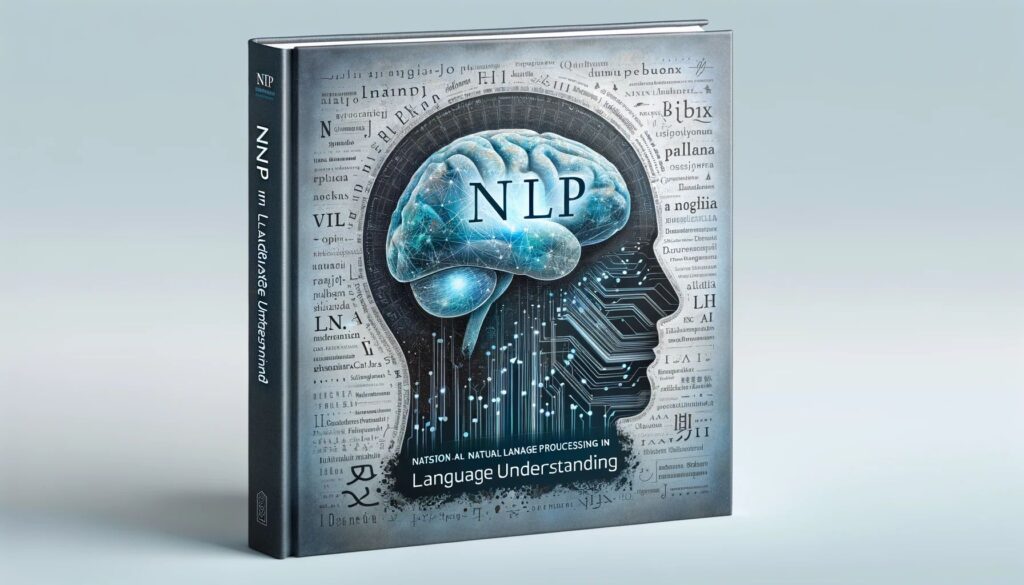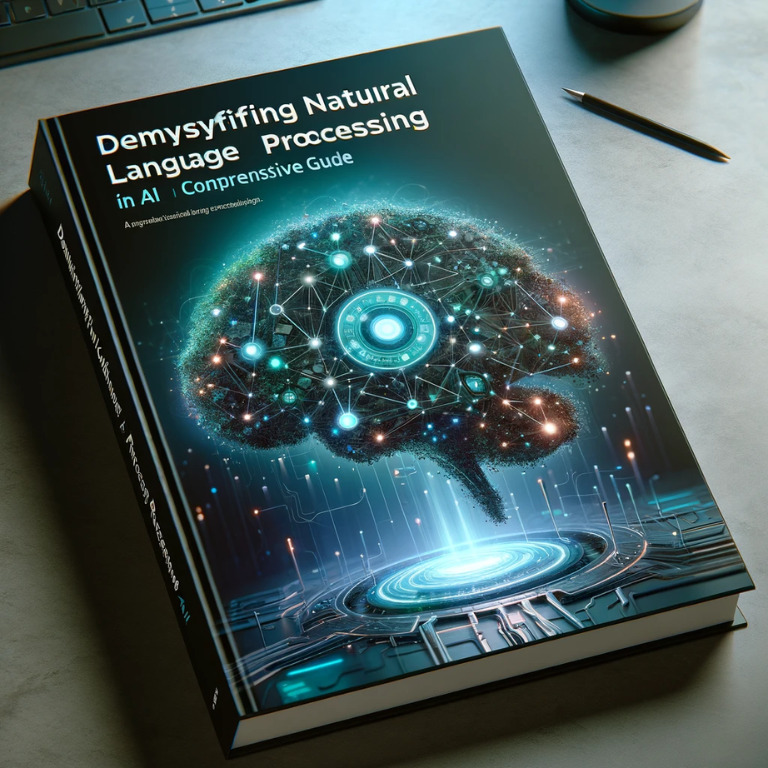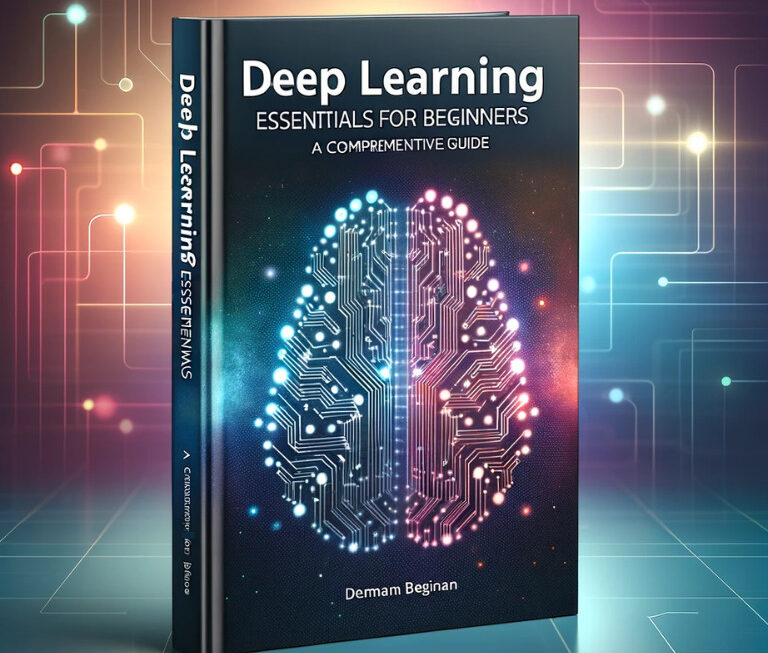In the rapidly evolving landscape of artificial intelligence (AI), one area that has garnered significant attention and witnessed remarkable advancements is Natural Language Processing (NLP). NLP is the branch of AI that focuses on the interaction between computers and human language. It enables machines to understand, interpret, and generate human language in a way that is both meaningful and contextually relevant. This article serves as a comprehensive guide to demystify the intricate world of NLP in AI, shedding light on its core concepts, applications, challenges, and the exciting future it holds.
Defining NLP and Its Significance
At its core, NLP is the science and technology behind teaching machines to understand and interact with human language. It enables computers to read, decipher, and generate human language, bridging the gap between human communication and computer understanding. The significance of NLP lies in its ability to process vast amounts of unstructured data, such as text and speech, and derive valuable insights from it.
NLP is not merely about language comprehension; it extends to language generation, enabling machines to produce coherent and contextually appropriate responses. This technology has revolutionized the way we interact with AI systems, making it possible to have natural and intuitive conversations with virtual assistants, chatbots, and other AI-driven applications.
Historical Evolution of NLP
The roots of NLP can be traced back to the mid-20th century when the pioneers of computer science and linguistics began to explore the possibility of teaching computers to understand and process human language. Early efforts in machine translation, such as the development of the Georgetown-IBM machine in the 1950s, laid the foundation for NLP research.
Over the decades, NLP has evolved significantly, driven by breakthroughs in machine learning, deep learning, and the availability of large language datasets. Milestones such as the development of rule-based systems, statistical models, and neural networks have contributed to the remarkable progress in NLP.
How NLP Models Understand Human Language
To comprehend the inner workings of Natural Language Processing (NLP) in AI, it’s crucial to explore how NLP models understand human language. At the heart of NLP lies the ability to process, interpret, and derive meaning from the vast array of words, sentences, and texts that make up human communication.
Tokenization and Text Preprocessing
One of the fundamental tasks in NLP is tokenization, the process of breaking down a text into individual words or tokens. Consider the sentence: “Natural Language Processing is fascinating!” Tokenization would split this sentence into tokens like [“Natural”, “Language”, “Processing”, “is”, “fascinating”, “!”]. This step is essential because it allows machines to work with discrete units of language.
Text preprocessing goes beyond tokenization and includes tasks like lowercasing (converting all text to lowercase), removing punctuation, and handling special characters. These steps help standardize the text and make it easier for NLP models to process.
Word Embeddings and Vectorization
Once text is tokenized and preprocessed, NLP models represent words in a numerical format. This is achieved through techniques like word embeddings and vectorization. In simple terms, word embeddings are mathematical representations of words, and vectorization refers to converting these representations into vectors (arrays of numbers).
Word embeddings capture semantic relationships between words. For instance, in a well-trained word embedding model, words with similar meanings are represented as vectors that are close to each other in multi-dimensional space. This allows NLP models to understand the contextual meaning of words.
Syntax and Semantics in NLP
NLP models not only understand individual words but also the structure and meaning of sentences. This involves parsing the syntax (sentence structure) and semantics (meaning) of the text.
Syntax analysis involves identifying the grammatical components of a sentence, such as subjects, verbs, and objects. It helps NLP models understand the grammatical rules governing a language.
Semantic analysis, on the other hand, focuses on the meaning of words and how they relate to each other in a sentence. This is where NLP models derive the deeper understanding of language by recognizing relationships, synonyms, antonyms, and context.
Tokenization and Vectorization
Here’s a simple Python code snippet illustrating tokenization and vectorization using the popular library spaCy:
import spacy
# Load the spaCy NLP model
nlp = spacy.load("en_core_web_sm")
# Sample text
text = "Natural Language Processing is fascinating!"
# Tokenization
doc = nlp(text)
tokens = [token.text for token in doc]
# Vectorization (word embeddings)
vector = doc.vector
# Print the tokens and vector
print("Tokens:", tokens)
print("Vector representation:", vector)
NLP in Language Understanding

In the realm of Natural Language Processing (NLP), language understanding is a pivotal aspect. It encompasses the ability of AI systems to grasp the meaning and context of human language. This section delves into the key components of language understanding and how NLP technologies excel in this domain.
Sentiment Analysis
Sentiment analysis, also known as opinion mining, is a prominent application of NLP in language understanding. It involves determining the sentiment or emotional tone expressed in a piece of text, be it positive, negative, or neutral. Businesses and organizations use sentiment analysis to gauge public opinion, customer feedback, and social media sentiment.
NLP models for sentiment analysis are trained on large datasets of labeled text, allowing them to classify sentiment accurately. They can analyze customer reviews, social media posts, or news articles to understand public sentiment towards products, services, or events.
Named Entity Recognition (NER)
Named Entity Recognition (NER) is another vital NLP task in language understanding. NER involves identifying and categorizing named entities within text, such as names of people, organizations, locations, dates, and more. NER is crucial for information extraction, document summarization, and organizing unstructured data.
NLP models for NER use machine learning techniques to recognize named entities in text. For example, in the sentence “Apple Inc. was founded by Steve Jobs in Cupertino,” NER would identify “Apple Inc.” as an organization, “Steve Jobs” as a person, and “Cupertino” as a location.
Part-of-Speech Tagging
Part-of-speech tagging (POS tagging) is a linguistic task where NLP models assign a grammatical category (e.g., noun, verb, adjective) to each word in a sentence. This information is essential for understanding the syntactic structure of a sentence and aids in various NLP applications like text summarization and machine translation.
NLP models use statistical techniques and language-specific knowledge to perform POS tagging accurately. For instance, in the sentence “The quick brown fox jumps over the lazy dog,” POS tagging would assign tags like “DT” (determiner) to “The,” “JJ” (adjective) to “quick,” and “NN” (noun) to “fox.”
Sentiment Analysis with Python
Let’s explore a Python code example for sentiment analysis using the popular library NLTK:
import nltk
from nltk.sentiment.vader import SentimentIntensityAnalyzer
# Initialize the sentiment analyzer
sid = SentimentIntensityAnalyzer()
# Sample text
text = "Natural Language Processing is amazing! It makes language understanding so easy."
# Analyze sentiment
sentiment_scores = sid.polarity_scores(text)
# Determine sentiment
if sentiment_scores['compound'] >= 0.05:
sentiment = "positive"
elif sentiment_scores['compound'] <= -0.05:
sentiment = "negative"
else:
sentiment = "neutral"
# Print sentiment result
print("Sentiment:", sentiment)
NLP in Language Generation
Natural Language Processing (NLP) not only excels in understanding human language but also in generating language that is coherent, contextually relevant, and human-like. This section delves into the intriguing field of language generation within the realm of NLP.
Text Generation Models
Text generation models are at the forefront of NLP’s language generation capabilities. These models are designed to produce human-like text based on a given input or context. One of the most notable examples of text generation models is the Generative Pre-trained Transformer 3 (GPT-3) developed by OpenAI.
GPT-3 and similar models are trained on vast datasets of text from the internet, allowing them to generate text that closely resembles human writing. They have applications in various domains, including content generation, chatbots, virtual assistants, and even creative writing.
Chatbots and Conversational AI
NLP-driven chatbots and conversational AI systems have become integral in customer service, support, and online interactions. These AI-powered entities engage in natural conversations with users, answering questions, providing information, and even solving problems.
Chatbots use NLP techniques to understand user queries and generate appropriate responses. They can handle a wide range of topics and contexts, making them versatile tools for businesses and organizations.
Content Generation for Various Applications
NLP’s language generation capabilities extend to content creation for diverse applications. For instance, AI can generate news articles, product descriptions, marketing copy, and even code snippets. This automation of content generation streamlines various processes and increases efficiency.
AI-powered content generation tools can assist writers, marketers, and developers by providing drafts, suggestions, and even full-fledged content pieces, reducing the time and effort required for content creation.
AI Coding Example: Text Generation with GPT-3
While GPT-3 is a large model that requires substantial computational resources, using it for text generation is straightforward with the right API access. Here’s a simplified example of generating text using GPT-3 in Python:
import openai
# Set up your OpenAI API key (replace with your actual key)
api_key = "YOUR_API_KEY"
# Initialize the OpenAI API client
openai.api_key = api_key
# Provide a prompt for text generation
prompt = "Once upon a time in a faraway land,"
# Generate text using GPT-3
response = openai.Completion.create(
engine="davinci", # Choose the GPT-3 engine
prompt=prompt,
max_tokens=50 # Adjust the length of generated text
)
# Print the generated text
print(response.choices[0].text)
Challenges and Limitations of NLP
While Natural Language Processing (NLP) has made significant strides in understanding and generating human language, it is not without its challenges and limitations. As we explore these aspects, it becomes evident that NLP is a complex field with room for improvement and ethical considerations.
Ambiguity and Context Understanding
One of the primary challenges in NLP is dealing with the inherent ambiguity of language. Human language often relies on context, tone, and subtle nuances for interpretation. Words and phrases can have multiple meanings depending on the context in which they are used. NLP models must navigate this ambiguity to provide accurate understanding and generate appropriate responses.
For example, consider the sentence: “I saw a man on a hill with a telescope.” The word “saw” could mean either “perceived visually” or “used a saw to cut.” Context plays a crucial role in disambiguating such sentences.
Bias and Ethical Considerations
Bias in NLP algorithms is a critical concern. NLP models learn from data, and if the training data contains biases or prejudices, the models can perpetuate those biases. This can lead to biased language generation or biased decision-making in applications like hiring or lending.
Addressing bias in NLP models requires careful data curation, bias detection, and mitigation strategies. Ethical considerations in NLP involve ensuring fairness, transparency, and accountability in AI systems to prevent discrimination and uphold ethical standards.
Multilingual and Cross-Cultural Challenges
NLP’s applicability extends to multiple languages and cultures, presenting a unique set of challenges. Different languages have distinct grammatical structures, idiomatic expressions, and cultural references. NLP models need to be adapted and trained for each language, making multilingual NLP a complex task.
Cross-cultural challenges also arise when translating between languages or interpreting text from diverse cultural contexts. Misinterpretations can occur when cultural nuances are not taken into account.
AI Coding Example: Bias Detection in Text
Detecting bias in text is a crucial step in mitigating bias in NLP models. Here’s a simplified Python code snippet that uses a pre-trained model for bias detection:
import transformers
from transformers import pipeline
# Load a pre-trained model for bias detection (replace with actual model)
model = transformers.AutoModelForMaskedLM.from_pretrained("model_name")
# Initialize the pipeline for bias detection
bias_detection = pipeline("bias-detection", model=model)
# Sample text with potential bias
text = "The nurse quickly responded to the patient's needs."
# Detect bias in the text
bias_score = bias_detection(text)
# Print the bias score
print("Bias Score:", bias_score)
Conclusion
In conclusion, Natural Language Processing (NLP) in AI is a captivating and multifaceted field that has revolutionized the way we interact with machines and process human language. We embarked on a journey to demystify NLP, starting with its fundamental principles of language understanding and generation. NLP models, driven by tokenization, word embeddings, and syntactic analysis, have become proficient in deciphering human language. We delved into their role in sentiment analysis, named entity recognition, and part-of-speech tagging, showcasing their diverse applications.
Language generation, a remarkable aspect of NLP, was exemplified through text generation models, chatbots, and content generation tools. Yet, NLP faces challenges, including the complexities of ambiguity, bias, and cross-cultural nuances. We even explored bias detection using AI coding. Despite these challenges, NLP’s potential to transform industries like healthcare, finance, and content creation is undeniable. As we navigate the intricacies of NLP, it’s crucial to ensure ethical AI practices and responsible deployment. In this dynamic landscape, NLP continues to shape the future of AI-driven communication, promising further innovations and advancements that will redefine human-machine interaction and language processing.




